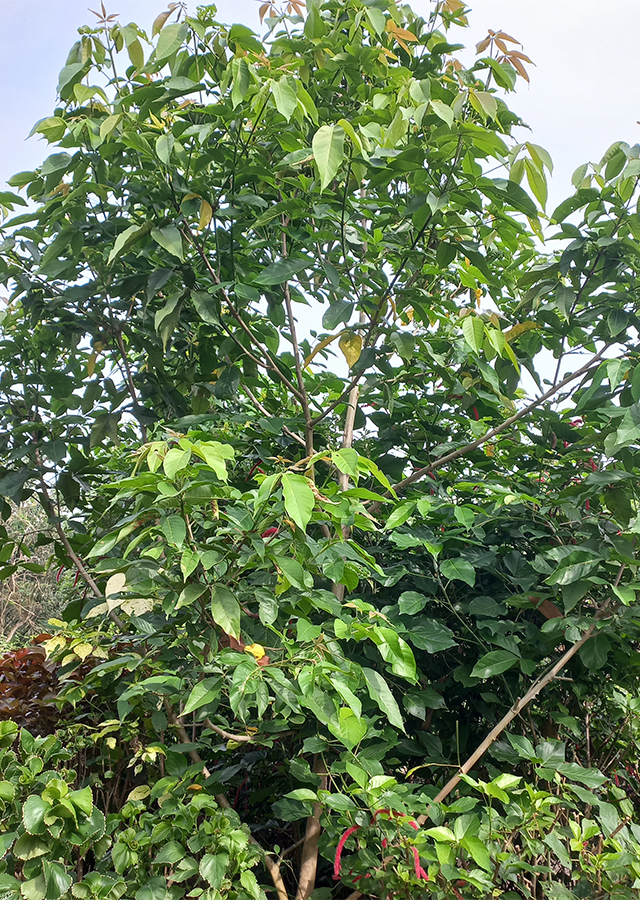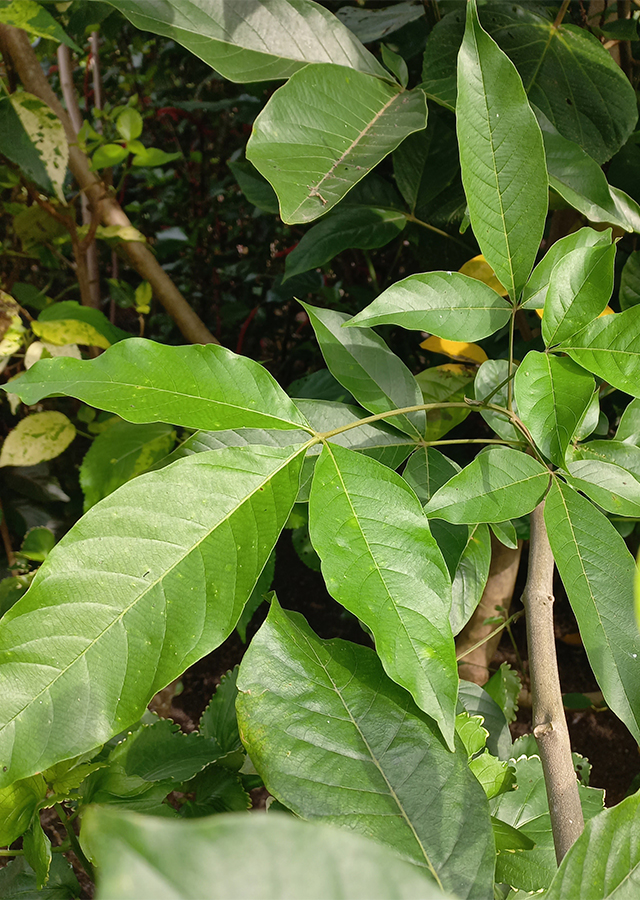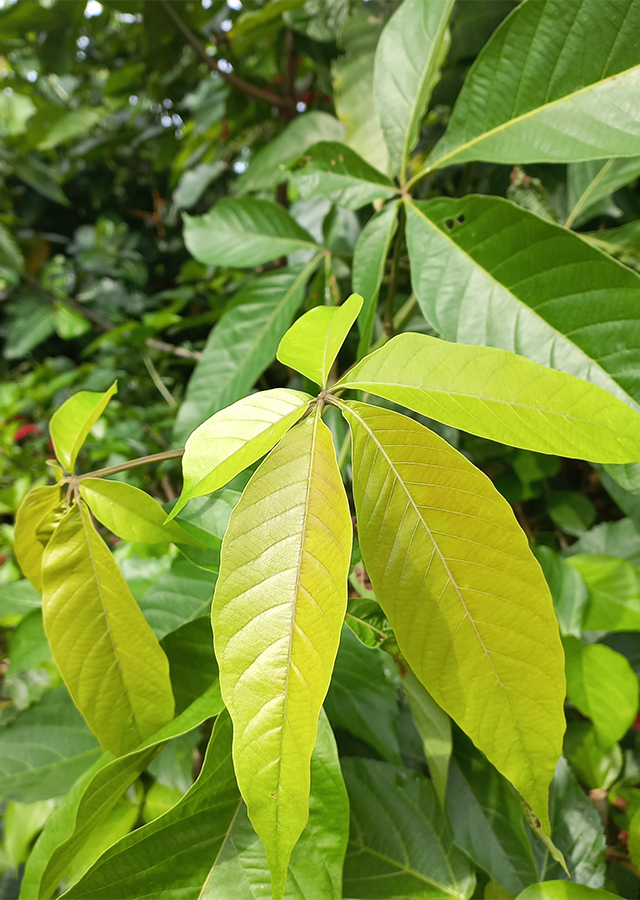Traditional Herbs from Vitex pinnata
stomach_ache
- Take enough bark\u00a0laban\u00a0.
- Wash the bark with running water until clean.
- Boil until boiling.
- Strain the boiled product.
- Drink while warm."] ,"fever
- Wash enough fresh laban leaves.
- Grind the ingredients finely until they become a paste.
- Put the concoction on your forehead.
- Do this until the fever subsides.
What is Vitex pinnata Looks like??



Parts of Vitex pinnata that could be used
Vitex pinnata Distribution
Laban comes from Tropical Asia, Myanmar, Thailand, Cambodia, Laos, Vietnam, Malaysia, Indonesia. Vitex pinnata has very strong and durable wood, lasting even in contact with water or soil. Wood is used for doors and windows, beds and furniture. The leaves and bark are used to treat stomach aches, fever, and malaria. Dayak people use the leaves as a medicine for dysentery. The wood is not commercially important because it is usually not available in large quantities. However, it is usually used locally as building materials for houses, boats, furniture, bridges, and also firewood. On the Malay Peninsula, the leaves and bark of laban are traditionally used to treat stomach ailments and wounds. Apart from being used as medicine, the bark is also used as a green dye and is used as a medium for growing orchids.
Agroecology of Vitex pinnata
Vitex pinnata is common in relatively dry areas of lowland forests, where it can be found at altitudes of up to 1,000 meters. This plant is found in full sun areas where the average annual rainfall is in the range of 590 - 1,500 mm, and the average annual temperature is 20 - 32 °C.
Morphology of Vitex pinnata
- Strong taproot.
- Stem woody, cylindrical, bark yellowish gray or light brown, smooth to scaly and sometimes fluted.
- Compound leaves, 3 or 5 leaflets, central leaflet elliptical nearly sessile, two outer usually much smaller than the others, ovate or elliptical, 3-25 cm, wide 1.5-10 cm round to base; wedge-shaped, pointed tip, flat edge, pinnate veins with 10-20 pairs of veins, yellowish green hairs.
- Flowers in terminal panicles, each flower (about 8 mm in diameter) has 5 fragrant white to purple petals." ,"The fruit is purplish black (diameter about 5 -\u00a08 cm), round, shiny and fleshy.
- The seeds are covered in a hard, stone endocarp.
Cultivation of Vitex pinnata
Laban reproduces by seed. Before planting, the seeds are treated by soaking the seeds for 15 seconds in hot water to stimulate and increase germination. Seeds begin to germinate 10 - 40 days after sowing with a germination rate of 60 - 80%.
Vitex pinnata, more details :
Chemical Content of Vitex pinnata
Sapony, tannins, iridoid glucoside (pinnatoside), three flavonoids (viscioside, apigenin, and luteolin).
Benefits of Vitex pinnata
Treats stomach aches, dysentery, fever, malaria, wounds.
Simplisia of Vitex pinnata
Another Facts for Vitex pinnata :
Synonym of Vitex pinnata
Pistaciovitex pinnata (L.) Kuntze, Vitex arborea Roxb., Vitex articulata Steud.
Habitus of Vitex pinnata
Tree. Annual tree, reaching 25 m high
Habitat of Vitex pinnata
- Riverside", "Forest", "Grassland", "Land



No comments:
Post a Comment